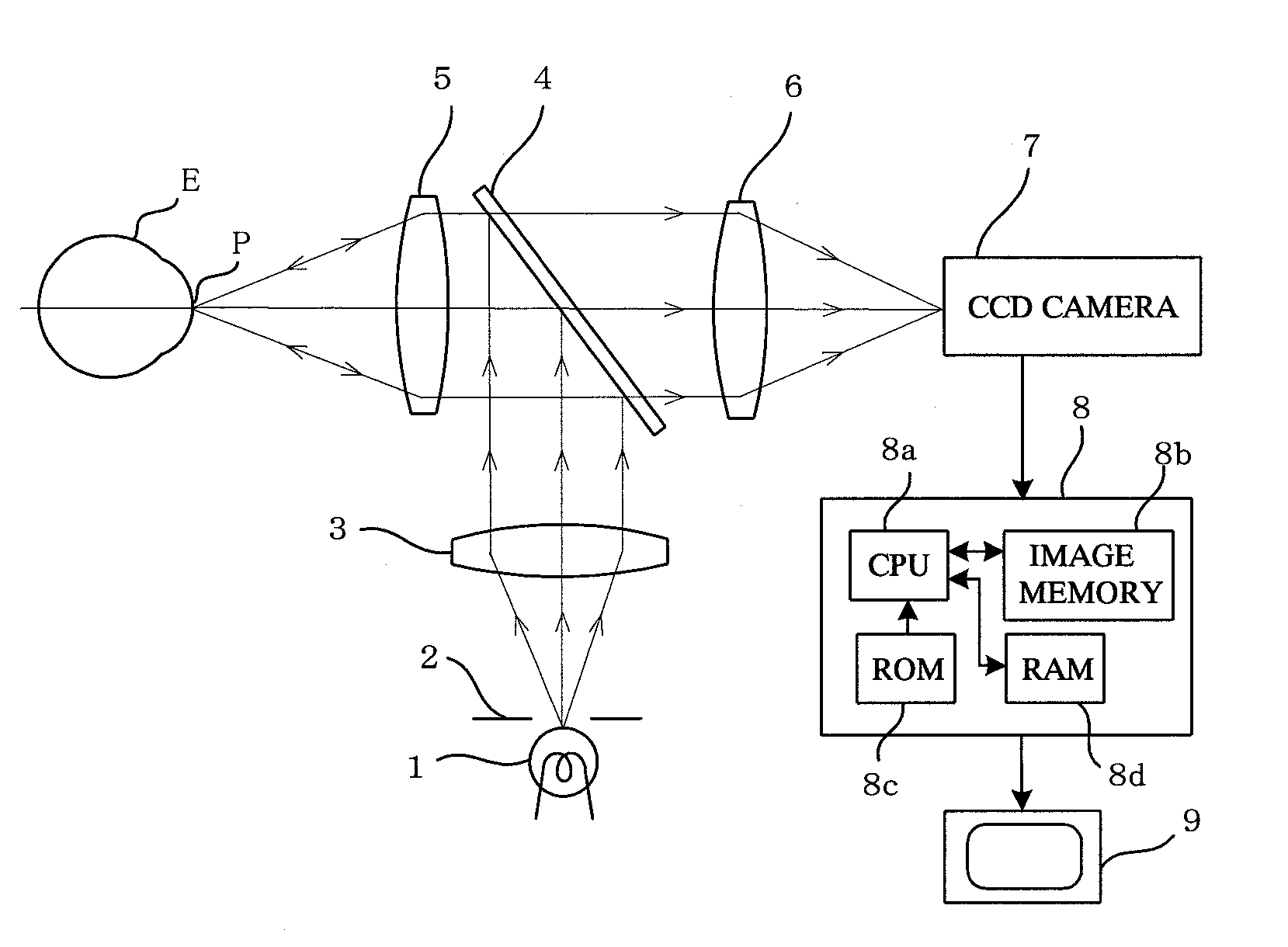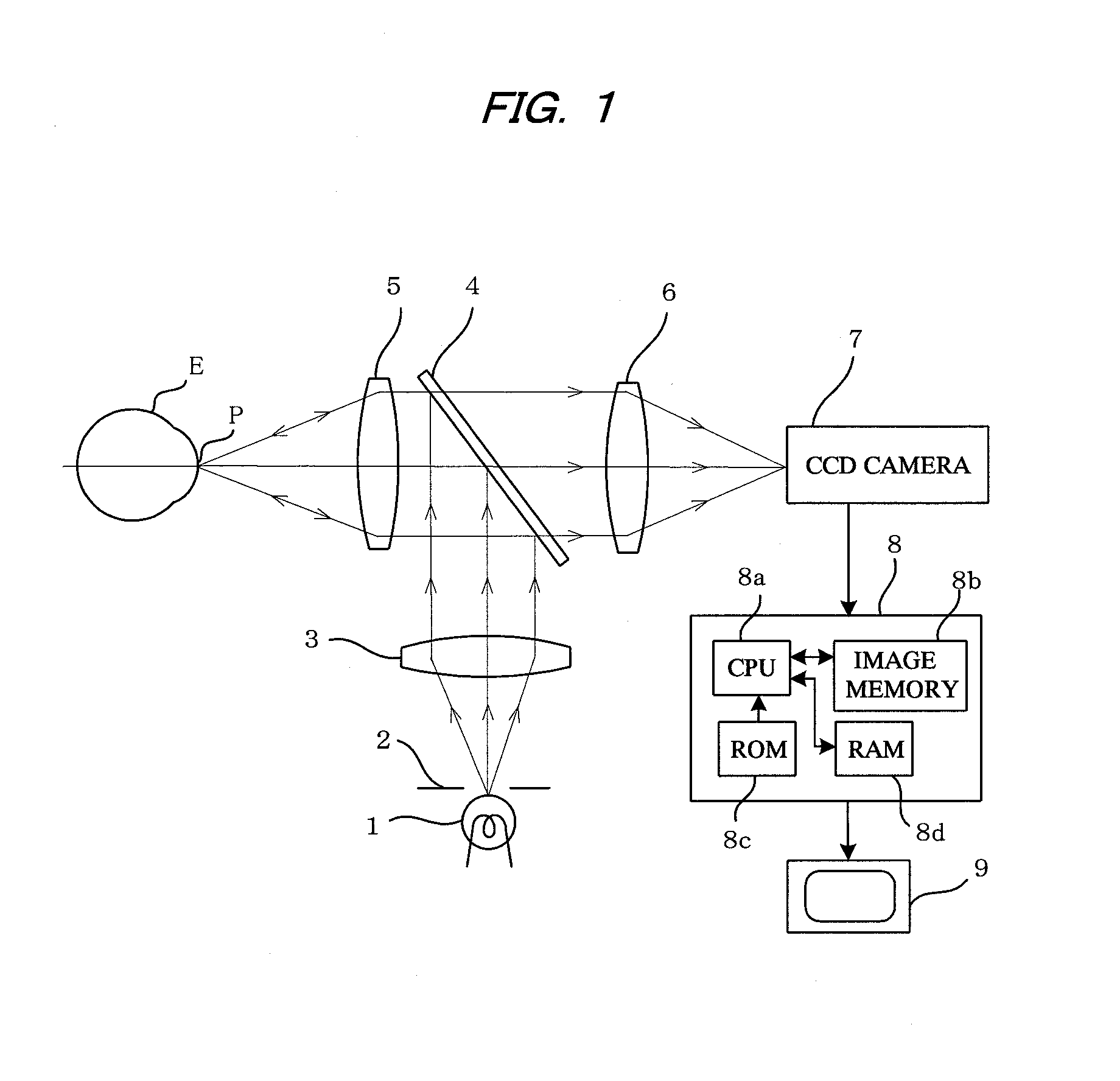Ophthalmologic apparatus and image classification method
- Summary
- Abstract
- Description
- Claims
- Application Information
AI Technical Summary
Benefits of technology
Problems solved by technology
Method used
Image
Examples
embodiments
[0034]FIG. 1 shows a general configuration of the ophthalmologic apparatus according to the present invention. Reference numeral 1 in the drawing indicates a white light source for illuminating an eye E to be examined, and it is composed of a halogen lamp or the like. Light emitted from the white light source 1 passes through a mask 2 for limiting the illumination field of view, and then illuminates a predetermined point P on the eye E to be examined via a lens 3, a half mirror 4, and a lens 5. The position of point P is selected on the tear film on the cornea of the eye E to be examined. The light intensity of the white light source 1 can be adjusted by an intensity adjusting circuit (not shown).
[0035]Reflected light from point P forms a variety of interference patterns depending on the thickness and other states of the lipid layer (lipid film) of the topmost layer of tear film. The reflected light from the tear film lipid layer is received by a color CCD camera (imaging means) 7 v...
PUM
 Login to View More
Login to View More Abstract
Description
Claims
Application Information
 Login to View More
Login to View More - R&D
- Intellectual Property
- Life Sciences
- Materials
- Tech Scout
- Unparalleled Data Quality
- Higher Quality Content
- 60% Fewer Hallucinations
Browse by: Latest US Patents, China's latest patents, Technical Efficacy Thesaurus, Application Domain, Technology Topic, Popular Technical Reports.
© 2025 PatSnap. All rights reserved.Legal|Privacy policy|Modern Slavery Act Transparency Statement|Sitemap|About US| Contact US: help@patsnap.com



